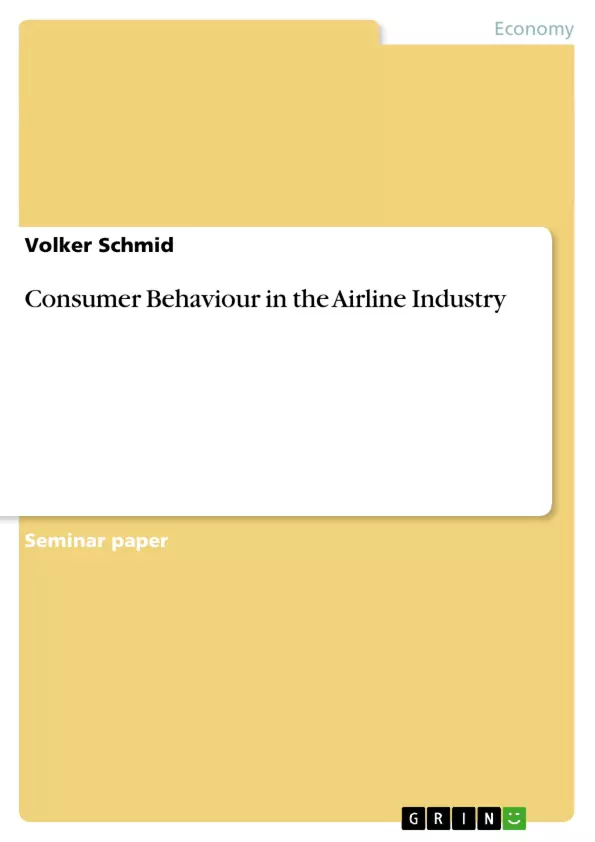To analyse the consumer behaviour presents an important criteria to be successful in the airline industry. This text gives answers to most relevant questions regarding consumer behaviour, using Air Lingus as an example. Finally, it includes a plan to implement a relationship marketing programme.
Inhaltsverzeichnis (Table of Contents)
- Question one
- Question two
- Question three
Zielsetzung und Themenschwerpunkte (Objectives and Key Themes)
This case study explores how Aer Lingus has implemented a customer-centric approach to business development, aiming to understand the strategies employed to prioritize customer needs and achieve sustained success.
- Customer-focused marketing strategies
- Importance of customer orientation for business success
- Strategies for improving customer satisfaction and loyalty
- The impact of competition on customer-centric strategies
- Analyzing customer needs and expectations
Zusammenfassung der Kapitel (Chapter Summaries)
- Question one: This chapter delves into Aer Lingus' efforts to prioritize customer needs in their business development. It discusses the rationale behind adopting a customer-focus strategy and explores the concept of customer orientation. The chapter highlights the importance of understanding customer needs through market research and identifying key customer concerns. It also explores the strategies Aer Lingus implemented to address these concerns, such as improving punctuality, reducing queuing times, and enhancing the in-flight experience.
- Question two: [This chapter will be summarized here when available.]
Schlüsselwörter (Keywords)
Customer focus, customer orientation, market research, customer satisfaction, airline industry, competitive advantage, service quality, customer experience, marketing strategies, business development.
- Quote paper
- Volker Schmid (Author), 2005, Consumer Behaviour in the Airline Industry, Munich, GRIN Verlag, https://www.grin.com/document/38127



